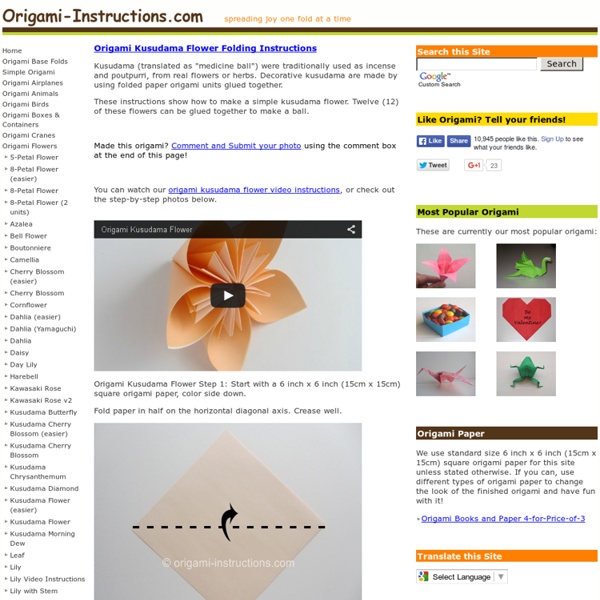Origami Kusudama Flower Folding Instructions - How to make an Origami Kusudama Flower

Higher consciousness
Higher consciousness is the consciousness of a higher Self, transcendental reality, or God. It is "the part of the human being that is capable of transcending animal instincts". The concept developed in German Idealism, and is a central notion in contemporary popular spirituality. Philosophy[edit] Fichte[edit] Fichte distinguished the finite or empirical ego from the pure or infinite ego. Fichte (1762-1814) was one of the founding figures of German idealism, which developed from the theoretical and ethical writings of Immanuel Kant. According to Michael Whiteman, Fichte's philosophical system "is a remarkable western formulation of eastern mystical teachings (of which he seems to have had no direct knowledge)." Schopenhauer[edit] In 1812 Schopenhauer started to use the term "the better consciousness", a consciousness ... According to Schopenhauer, The better consciousness in me lifts me into a world where there is no longer personality and causality or subject or object. Religion[edit]
Hinduism
Sacred-texts home Journal Articles: Hinduism OCRT: Hinduism Buy CD-ROM Buy books about Hinduism Vedas Upanishads Puranas Other Primary Texts Epics Mahabharata Ramayana Bhagavad Gita Vedanta Later texts Modern books The Vedas There are four Vedas, the Rig Veda, Sama Veda, Yajur Veda and Atharva Veda. The Vedas are the primary texts of Hinduism. They also had a vast influence on Buddhism, Jainism, and Sikhism. The Vedas contain hymns, incantations, and rituals from ancient India. Rig Veda The Rig-Veda translated by Ralph Griffith [1896]A complete English translation of the Rig Veda. Rig-Veda (Sanskrit)The complete Rig Veda in Sanskrit, in Unicode Devanagari script and standard romanization. Vedic Hymns, Part I (SBE 32)Hymns to the Maruts, Rudra, Vâyu and Vâta, tr. by F. Vedic Hymns, Part II (SBE 46)Hymns to Agni, tr. by Hermann Oldenberg [1897]The Vedic Hymns to Agni. A Vedic Reader for Students (excerpts) by A.A. Sama Veda Yajur Veda The Texts of the White Yajurveda translated by Ralph T.H.
Related:
Related:



